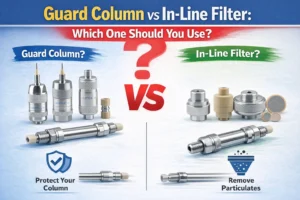
Guard Column vs In-Line Filter: Which One Should You Use?
In HPLC, most performance problems don’t start at the detector — they start before the column. High back
Home » UPLC Columns
Manufactured by uHPLCs, our UPLC columns deliver exceptional chromatographic performance with unmatched precision, reliability, and consistency. Combining advanced manufacturing technology, rigorous quality control, and expertise in diverse chemistries and particle sizes, we provide solutions for laboratories, research institutions, and industries worldwide, including pharmaceutical, environmental, food, and chemical sectors.
Our OEM services enable complete customization—covering specifications, bonding chemistries, branding, and packaging—to help clients establish competitive product lines. Driven by innovation and dedicated to customer success, uHPLCs stands as your trusted partner for high-performance, world-class UPLC column solutions.

5μm , 150Å / 3.5μm , 150Å
2.1*50mm / 2.1*100mm

5μm , 120Å / 3μm , 120Å / 1.8μm , 120Å 2.1*50mm / 2.1*100mm
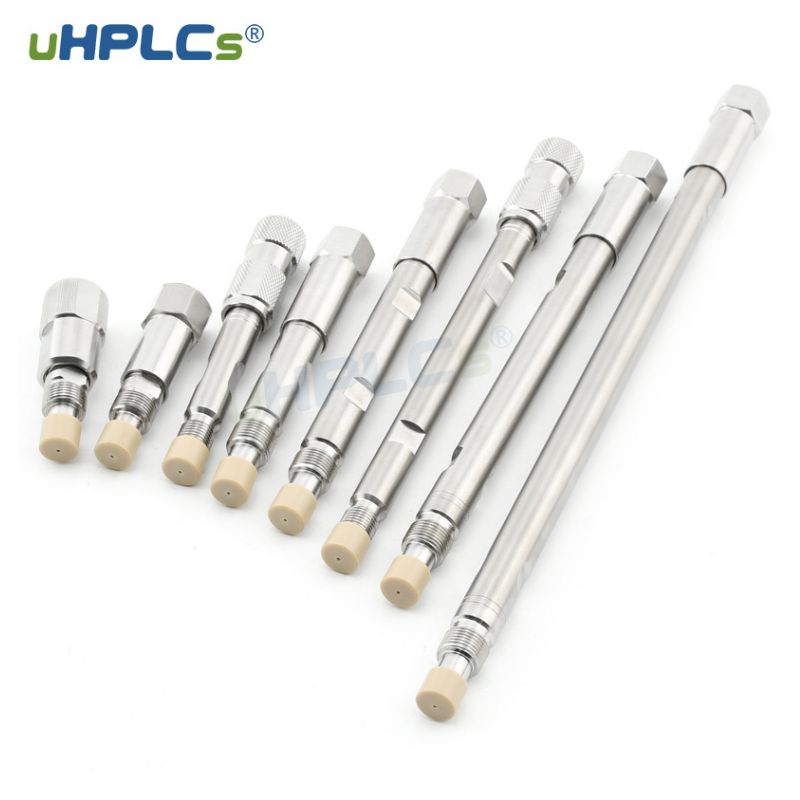
5μm , 120Å / 3μm , 120Å / 1.8μm , 120Å 2.1*50mm / 2.1*100mm

5μm , 120Å / 3μm , 120Å / 1.8μm , 120Å 2.1*50mm / 2.1*100mm

5μm , 120Å / 3μm , 120Å / 1.8μm , 120Å 2.1*50mm / 2.1*100mm
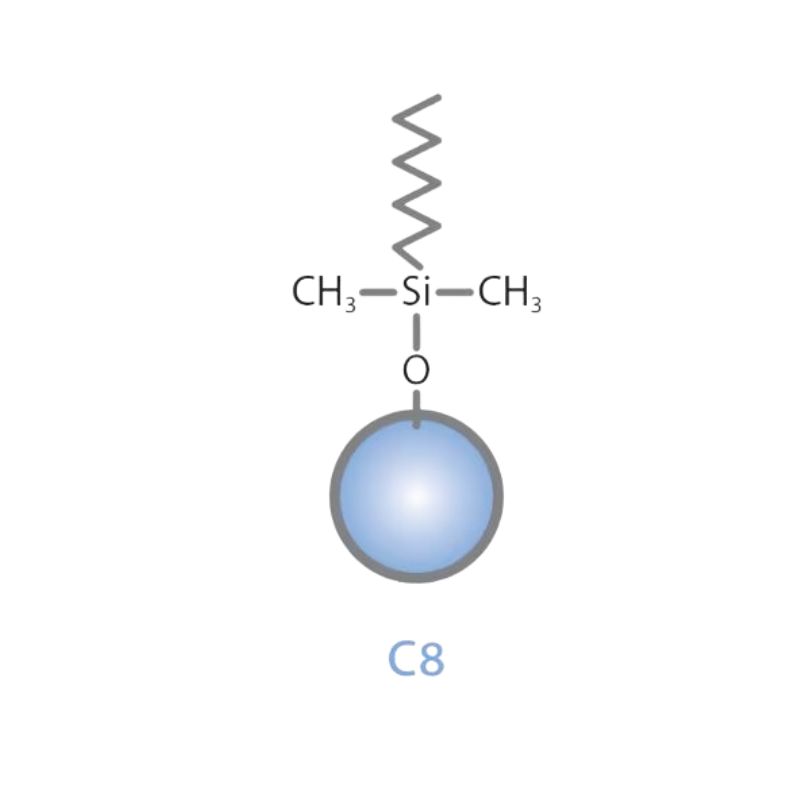
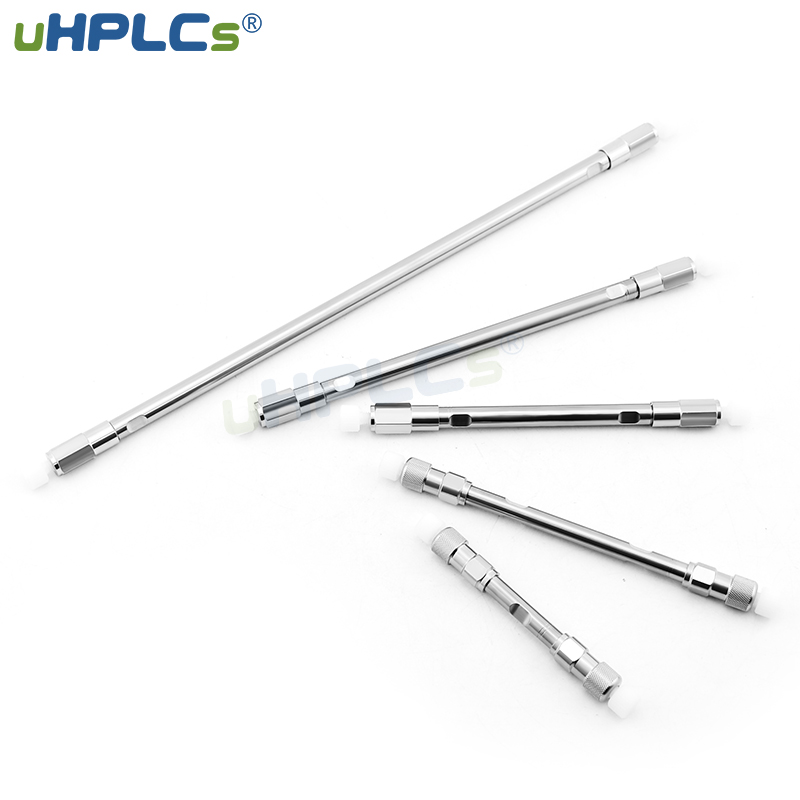
5μm , 150Å / 3.5μm , 150Å
2.1*50mm / 2.1*100mm
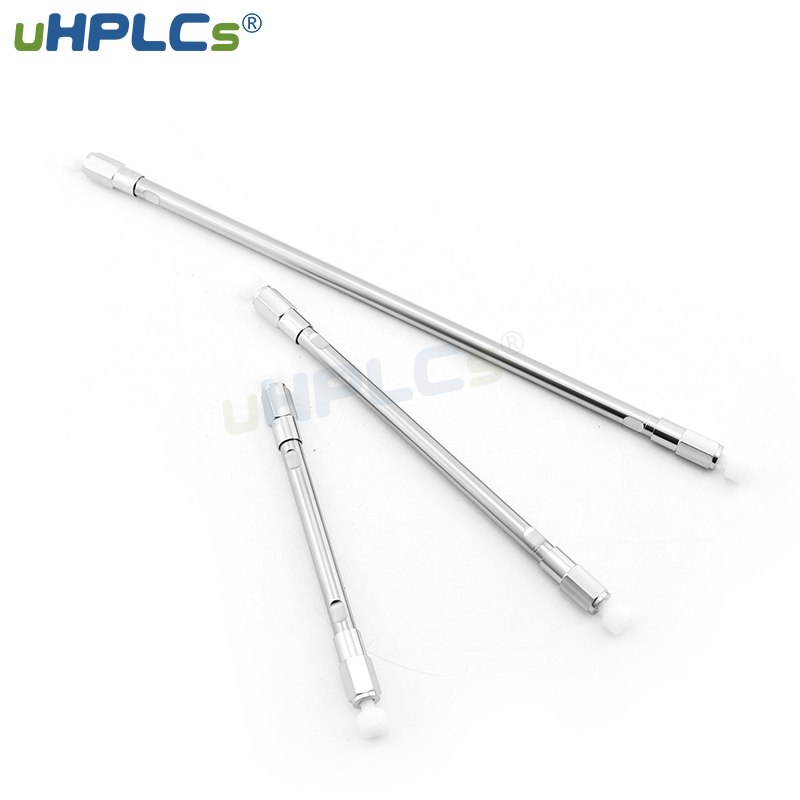
5μm , 120Å / 3μm , 120Å / 1.8μm , 120Å 2.1*50mm / 2.1*100mm

5μm , 120Å / 3μm , 120Å / 1.8μm , 120Å 2.1*50mm / 2.1*100mm

5μm , 120Å / 3μm , 120Å 2.1*50mm / 2.1*100mm
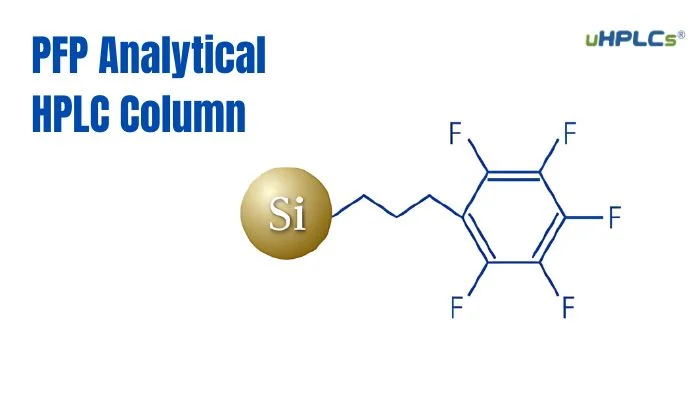
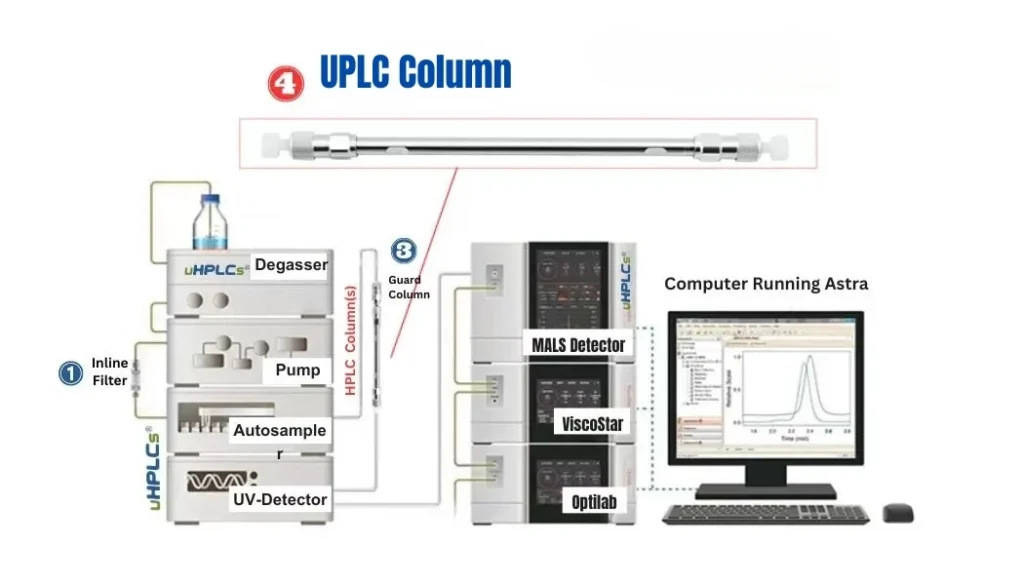
In addition to custom-designed columns, uHPLCs manufactures a comprehensive range of standard UPLC columns for diverse applications, including reversed-phase, normal-phase, ion exchange, size exclusion, and HILIC. We also produce prepacked columns and a full selection of accessories, such as frits, end-fittings, and guard columns, to support a complete chromatography workflow.
With advanced, state-of-the-art manufacturing facilities, uHPLCs has the capability to produce UPLC columns with exceptional precision, consistency, and durability. Our processes combine precision engineering, automated packing technology, and stringent testing to ensure every column delivers superior performance and reproducibility. Backed by a strict quality control program, all our columns meet and exceed CE, SGS, and UL standards, ensuring reliability and accuracy for the most demanding analytical applications.

Experience the Precision and Reliability of Our High-Quality Columns Today

uHPLCs prides itself on providing excellent customer service, both before and after the sale.

Quality is a top priority. We understand that the products we manufacture will be used in critical applications, which is why we take great care to ensure that they are of the highest quality.

uHPLCs specializes in the production of HPLC columns, and we take great care to ensure that the columns we produce are of the highest quality.
uHPLCs is proud to have a dedicated team of highly skilled scientists and engineers specializing in HPLC and UPLC research and development. With extensive industry experience, our R&D team is at the forefront of creating innovative column technologies that address the evolving demands of modern analytical science.
Leveraging deep technical expertise, they continuously optimize column design, packing methods, and material selection to enhance performance, reproducibility, and durability. This commitment ensures that every column we deliver meets the highest standards of quality, giving our customers reliable solutions for even the most challenging applications.
uHPLCs take great pride in the quality of our products and services. To demonstrate our commitment to excellence, we have obtained a number of certifications and patents that attest to the performance and reliability of our offerings. Our certifications include ISO, CE, and SGS standards and our patents showcase our ability to innovate in the field. We invite you to put your trust in us and discover the benefits of using our high-quality and certified products.

We Supply Effective UPLC Column OEM Service, please check if can meet your lab requirements.
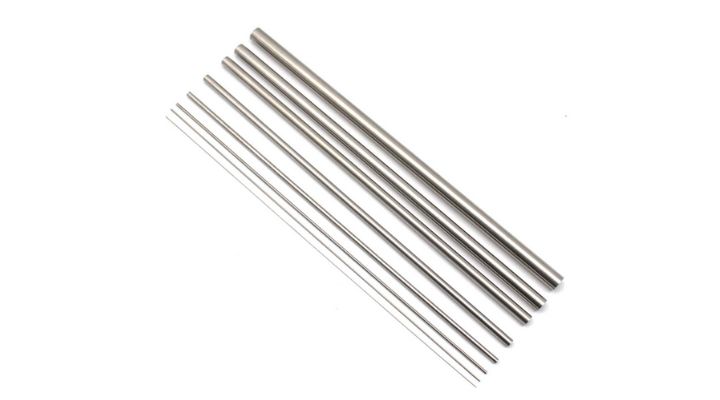
High Quality UPLC Column 316L, 316 Stainless Steel Tube Materials

Design New UPLC Columns 100% As Clients Request

Make UPLC Column Samples And Test Before Mass Products.






High Quality HPLC Column 316L, 316 Stainless Steel Tube Materials

Design New HPLC Columns 100% As Clients Request

Make HPLC Column Samples And Test Before Mass Products.
uHPLCs manufactures a wide range of UPLC columns tailored to different separation modes, analyte characteristics, and application needs. The main types include:
Reversed-Phase (RP) Columns
Normal-Phase (NP) Columns
Ion Exchange (IEX) Columns
Size Exclusion (SEC) Columns
Hydrophilic Interaction Liquid Chromatography (HILIC) Columns
Each type uses a different separation mechanism and is suited for specific analytical challenges. Below is a detailed overview of each type.

Description:
Reversed-phase columns are the most widely used UPLC columns. They have a non-polar stationary phase (e.g., C18, C8, phenyl) bonded to silica particles, and a polar mobile phase (usually water with organic modifiers like acetonitrile or methanol).
Applications:
Pharmaceutical compound analysis
Small molecule drug quantification
Food additives and pesticide residue testing
Metabolomics studies
Advantages:
High versatility and broad application range
Excellent reproducibility and retention for hydrophobic compounds
Compatible with gradient and isocratic methods
Description:
Normal-phase columns have a polar stationary phase (e.g., bare silica, amino, cyano) and use non-polar mobile phases (e.g., hexane, chloroform, isopropanol). The separation is based on the polarity of analytes, where less polar compounds elute faster.
Applications:
Separation of structural isomers
Lipid and fat-soluble vitamin analysis
Purification of non-polar compounds
Chiral separations (with appropriate modifiers)
Advantages:
High selectivity for polar analytes
Excellent for separating compounds with similar hydrophobicity
Often used for method development and specialized analyses
Description:
Ion exchange columns have charged functional groups bonded to the stationary phase, enabling separation of ionic compounds based on charge interactions. They can be cation exchange (negatively charged stationary phase attracts positive ions) or anion exchange (positively charged stationary phase attracts negative ions).
Applications:
Protein and peptide purification
Oligonucleotide analysis
Amino acid and inorganic ion determination
Biomolecule charge variant profiling
Advantages:
High resolution for charged analytes
Can handle large biomolecules
Excellent for preparative and analytical applications
Description:
Size exclusion columns separate molecules based on size using a porous stationary phase. Larger molecules elute first because they cannot enter the pores, while smaller molecules penetrate deeper into the pore structure and elute later.
Applications:
Protein and antibody aggregation analysis
Polysaccharide and polymer molecular weight distribution
Biomolecule purity assessment
Advantages:
Gentle, non-denaturing separation
No need for harsh solvents or pH extremes
Provides molecular size and structural information
Description:
Hydrophilic Interaction Liquid Chromatography (HILIC) columns have a polar stationary phase and use a high percentage of organic solvent (often acetonitrile) with a small amount of aqueous buffer. They are excellent for separating polar and hydrophilic compounds.
Applications:
Glycan and carbohydrate profiling
Polar metabolite analysis
Pharmaceutical polar impurity detection
Nucleoside and nucleotide analysis
Advantages:
Excellent retention of very polar compounds
High compatibility with MS detection due to volatile mobile phases
Complementary selectivity to reversed-phase columns
Column efficiency in UPLC refers to how well a column can separate different compounds into sharp, distinct peaks during chromatography.
It’s a measure of the resolving power of the column — the higher the efficiency, the narrower and better-defined the peaks, which means better separation.
Theoretical Plates (N):
Efficiency is usually expressed as the number of theoretical plates. A “theoretical plate” is a conceptual stage where solute molecules equilibrate between the mobile and stationary phases.
Formula:
N=16(tRWb)2N = 16 \left( \frac{t_R}{W_b} \right)^2N=16(WbtR)2where:
t<sub>R</sub> = retention time of the peak
W<sub>b</sub> = peak width at the base
Height Equivalent to a Theoretical Plate (HETP):
Another way is to calculate HETP:
where:
L = column length
N = theoretical plates
Smaller H values mean better efficiency.
Better Resolution – High efficiency means peaks are narrow and well separated, making it easier to identify and quantify compounds.
Faster Analysis – In UPLC, smaller particle sizes (1.7–1.8 µm) increase efficiency, allowing faster runs without losing resolution.
Lower Solvent Usage – Efficient columns require less mobile phase for the same resolution.
Improved Sensitivity – Narrow peaks increase the signal-to-noise ratio, improving detection limits.
Precision Packing Technology – Uniform, high-density packing of sub-2 µm particles for optimal flow paths.
Strict Particle Size Control – Tight distribution reduces band broadening.
Advanced Column Hardware – Low dead volume end-fittings and frits maintain flow uniformity.
Rigorous Quality Testing – Every column is tested for efficiency and symmetry before shipment.
Proper storage of a UPLC column is essential to maintain performance, extend lifespan, and prevent contamination or degradation of the stationary phase. The storage procedure depends on the column type, mobile phase used, and duration of storage.
1. Short-Term Storage (Daily to Weekly)
If the column will be reused within a few days:
Flush with the initial mobile phase to remove strongly retained compounds.
Keep the column fully capped with end plugs to prevent drying and contamination.
Store upright at room temperature, away from direct sunlight or heat sources.
2. Long-Term Storage (Weeks to Months)
Reversed-Phase Columns (e.g., C18, C8, Phenyl)
Flush with 100% organic solvent (e.g., acetonitrile or methanol) to remove water and avoid microbial growth.
Fill the column completely with the storage solvent (usually ACN or Methanol) before capping tightly.
Store at room temperature in a dust-free, dry environment.
Normal-Phase Columns
Use non-polar organic solvent (e.g., hexane or isopropanol/hexane mix) for storage.
Avoid exposure to moisture — store in a desiccator or sealed bag with desiccant if possible.
HILIC Columns
Store in high-organic content (≥70% acetonitrile) to preserve the stationary phase hydration layer.
Ion Exchange & Size Exclusion Columns
Follow manufacturer’s recommended buffer or preservative for storage (often with sodium azide to prevent microbial growth).
Never allow the column to dry out — always keep it filled with liquid.
3. General Storage Tips
Always cap both ends to prevent solvent evaporation and air bubbles.
Avoid freezing unless specified by the manufacturer.
Label the column with last used mobile phase and storage solvent.
Before reusing after storage, flush with at least 10 column volumes of the mobile phase to equilibrate.
4. uHPLCs Best Practices
At uHPLCs, all UPLC columns are shipped with an appropriate storage solvent and securely capped. We recommend customers follow our included Column Care Guide, which outlines the exact flushing and storage procedures for each column chemistry. This ensures maximum performance, reproducibility, and extended service life.
UPLC (Ultra Performance Liquid Chromatography) columns are designed for high-resolution, high-speed, and high-sensitivity separations. They are widely used in analytical, quality control, and research environments where precision and reproducibility are critical.
1. Pharmaceutical & Drug Development
Active Pharmaceutical Ingredient (API) Analysis – Quantifying purity, potency, and degradation products.
Impurity Profiling – Detecting trace impurities and by-products.
Stability Studies – Monitoring changes in drug composition over time.
Chiral Separations – Differentiating enantiomers for regulatory compliance.
2. Biotechnology & Biopharmaceuticals
Monoclonal Antibody Characterization – Size, charge, and glycan profiling.
Protein and Peptide Mapping – Detailed sequence and modification analysis.
Oligonucleotide Analysis – Quality control of DNA/RNA therapeutics.
3. Environmental Testing
Water and Soil Contaminant Detection – Pesticides, herbicides, and industrial pollutants.
Trace Organic Analysis – Pharmaceuticals and personal care products in wastewater.
4. Food & Beverage Analysis
Additive and Preservative Quantification – Sweeteners, colorants, and antioxidants.
Nutritional Component Profiling – Vitamins, amino acids, and fatty acids.
Residue Testing – Detecting pesticides and veterinary drugs in food products.
5. Clinical & Forensic Analysis
Therapeutic Drug Monitoring (TDM) – Ensuring correct drug dosage in patients.
Toxicology Screening – Identifying drugs of abuse, poisons, and metabolites.
Metabolomics Studies – Profiling biomarkers in biological samples.
6. Chemical & Materials Research
Polymer and Oligomer Analysis – Molecular weight distribution and purity.
Specialty Chemicals QC – High-precision analysis of fine chemicals and intermediates.
💡 Why uHPLCs Columns Excel in These Applications:
Sub-2 µm particle technology for superior resolution and speed.
Wide chemistry portfolio (C18, C8, Phenyl, HILIC, IEX, SEC, etc.) to cover all separation modes.
Custom and OEM options to meet specific industry and regulatory requirements.
1. Industry-Leading Manufacturing Capability
With advanced production lines and precision packing technology, uHPLCs produces UPLC columns that deliver exceptional separation efficiency, reproducibility, and durability. Our sub-2 µm particle packing ensures high resolution and shorter run times without compromising peak shape.
2. Extensive Product Portfolio
We offer a full range of standard and custom UPLC columns, including reversed-phase, normal-phase, ion exchange, size exclusion, and HILIC. From small molecule analysis to large biomolecule separations, we have solutions for every application.
3. OEM & Customization Expertise
uHPLCs is a trusted OEM manufacturer for leading chromatography brands worldwide. We provide complete customization — from bonding chemistry and particle size to branding, labeling, and packaging — enabling clients to build their own high-quality product lines.
4. Certified Quality & Reliability
Every column undergoes strict quality control and performance testing to meet CE, SGS, and UL standards. This ensures consistent results and long-term stability, even under demanding analytical conditions.
5. Expert Technical Support
Our team of experienced chromatographers, scientists, and engineers offers professional method development guidance, troubleshooting, and application support, helping customers achieve the best performance from their columns.
6. Global Trust & Proven Track Record
uHPLCs columns are trusted by research labs, universities, pharmaceutical companies, and industrial QC departments in over 60 countries, backed by years of positive feedback and repeat orders.
As Follow is Some Frequently Questions People Asked
A UPLC (Ultra Performance Liquid Chromatography) column is a high-resolution separation column designed for use in UPLC systems, which operate at higher pressures than conventional HPLC. These columns typically use sub-2 µm particles (commonly 1.7–1.8 µm) packed into stainless steel tubing to provide sharper peaks, higher separation efficiency, and faster analysis.
So A column is considered a UPLC (Ultra-Performance Liquid Chromatography) column when it uses very small particle sizes (≤2 µm) and operates under ultra-high pressure (typically up to 15,000–18,000 psi / 1000–1200 bar). This allows faster separations, sharper peaks, and higher resolution compared to conventional HPLC.
Because the particle size is smaller and packing is more uniform, UPLC columns can achieve better resolution and sensitivity while reducing analysis time. They are widely used in pharmaceutical analysis, biotechnology, environmental testing, food safety, and advanced research applications.
Common UPLC column dimensions include:
Examples:
The main difference lies in particle size and pressure tolerance.
HPLC columns typically use 3–5 µm particles and operate under pressures up to ~400 bar (6,000 psi).
UPLC columns use smaller sub-2 µm particles and can withstand much higher pressures, often exceeding 1,000 bar (15,000 psi).
This difference allows UPLC columns to deliver faster separations, better resolution, and higher sensitivity. However, they require UPLC-compatible systems that can handle these higher pressures.
UPLC stands for Ultra Performance Liquid Chromatography. It is an advanced form of liquid chromatography that improves upon traditional HPLC by using smaller particle sizes in the column packing material. This enhancement increases column efficiency, enabling faster analysis times, better separation quality, and improved detection limits.
The term was popularized by Waters Corporation, though the technology itself is used industry-wide under various names.
The difference between HPLC and UPLC chromatography is both technological and performance-based:
HPLC operates at lower pressures with larger particles, meaning run times are longer and resolution is limited by column efficiency.
UPLC uses smaller particles and higher pressures, giving much higher efficiency, sharper peaks, and faster results.
In practice, a UPLC method can achieve the same or better separation in a fraction of the time compared to HPLC — often using less mobile phase, which also reduces operating costs in the long term.
Yes — but with limitations. UPLC systems can run HPLC columns, and many labs use this flexibility to transition gradually from HPLC to UPLC. However:
You won’t get the full speed and resolution benefits of UPLC because the column’s larger particles limit efficiency.
UPLC’s high-pressure capability will not be fully utilized.
In contrast, you cannot safely use a UPLC column on an older HPLC system unless the system can handle the much higher operating pressures.
Absolutely. UPLC can complete separations in one-third to one-quarter of the time compared to equivalent HPLC methods. This is because the smaller particle size increases column efficiency, allowing shorter columns to be used without sacrificing resolution.
For example, a 30-minute HPLC run might be completed in under 10 minutes on UPLC with equal or better separation quality — making it highly attractive for high-throughput laboratories.
While UPLC offers clear advantages, there are a few considerations:
Higher Equipment Cost – UPLC systems are more expensive due to their high-pressure capability.
Maintenance Sensitivity – Small particles are more prone to blockage if the sample is not properly filtered, so maintenance and filtration practices are critical.
Column Cost – UPLC columns tend to be more expensive than standard HPLC columns.
Method Transfer – Adapting existing HPLC methods to UPLC may require re-validation, which can take time in regulated environments.
In terms of initial investment, yes — UPLC instruments and columns generally cost more than their HPLC counterparts. However, UPLC can actually reduce operating costs over time because it uses:
Less solvent per run (lower mobile phase consumption)
Less sample volume
Shorter analysis time, which increases throughput and instrument availability
Many laboratories find that these savings offset the higher purchase cost within a reasonable timeframe.
For liquid-phase separations, UPLC is considered one of the most powerful forms of analytical chromatography currently in widespread use. Its combination of high resolution, high sensitivity, and rapid analysis makes it the go-to choice for advanced research, pharmaceutical development, and quality control testing.
However, the “most powerful” technique depends on the application — for example, 2D-LC (two-dimensional liquid chromatography) can outperform single-mode UPLC in certain complex mixture analyses, and LC-MS/MS provides unmatched sensitivity for trace-level quantitation.
Contact uHPLCs Today for Any Questions for HPLC / UHPLC

In HPLC, most performance problems don’t start at the detector — they start before the column. High back
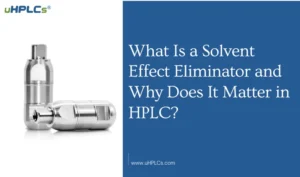
1. Introduction: The Hidden Impact of Solvent Effects in HPLC If you’ve ever observed baseline drift, unexpected baseline

Introduction In high-performance liquid chromatography (HPLC), the choice of an empty column tube is often overlooked, yet it
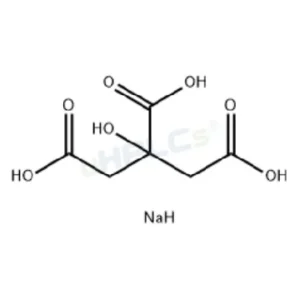
Uridine 5’-triphosphate Trisodium Salt (UTP-Na₃) Reference Standard | CAS 19817-92-6 | High-Purity Reference Materiel Product Code: U-D25015X Chemical

Glutathione (G-SH) Reference Standard | CAS 70-18-8 | High-Purity Reference Materiel Product Code: G-D25016X Chemical Name: Glutathione (G-SH)

Adenosine 5’-triphosphate Disodium Salt Reference Standard | CAS 987-65-5 | High-Purity Reference Materiel Product Code: A-D25014X Chemical Name:

Butafosfan Reference Standard | CAS 17316-67-5 | High-Purity Reference Materiel Product Code: B-D25013X Chemical Name: Butafosfan Category: Drug

Calcium Gluconate Reference Standard | CAS 299-28-5 | High-Purity Reference Materiel Product Code: C-D25012X Chemical Name: Calcium Gluconate

Magnesium L-aspartate Reference Standard | CAS 2068-80-6 | High-Purity Reference Materiel Product Code: M-D25011X Chemical Name: Magnesium L-aspartate
WhatsApp us
Subscribe for exclusive offers and updates on new arrivals